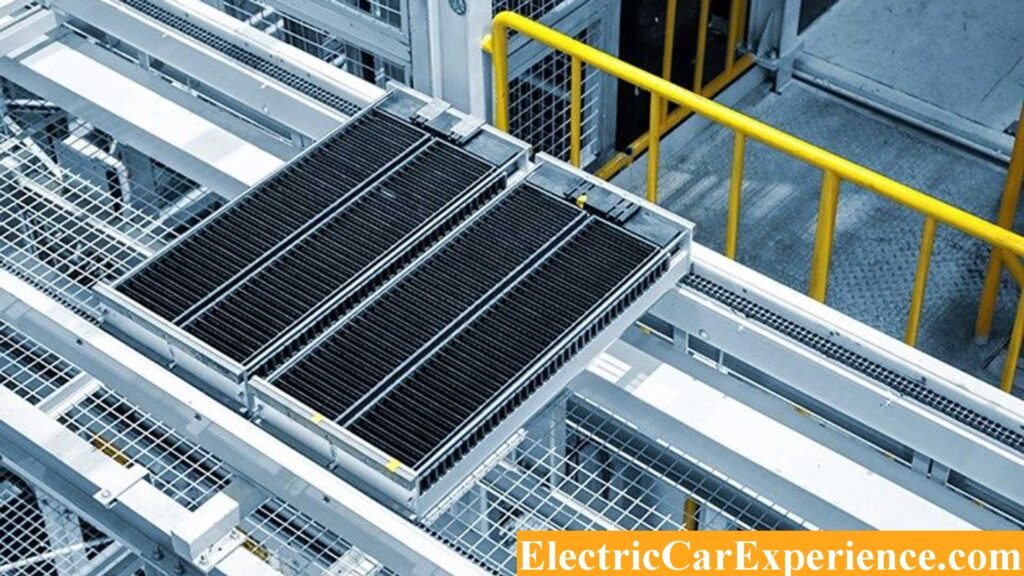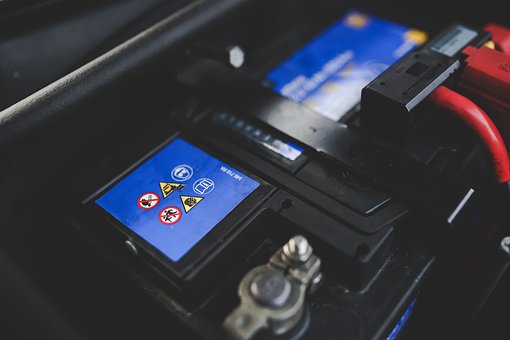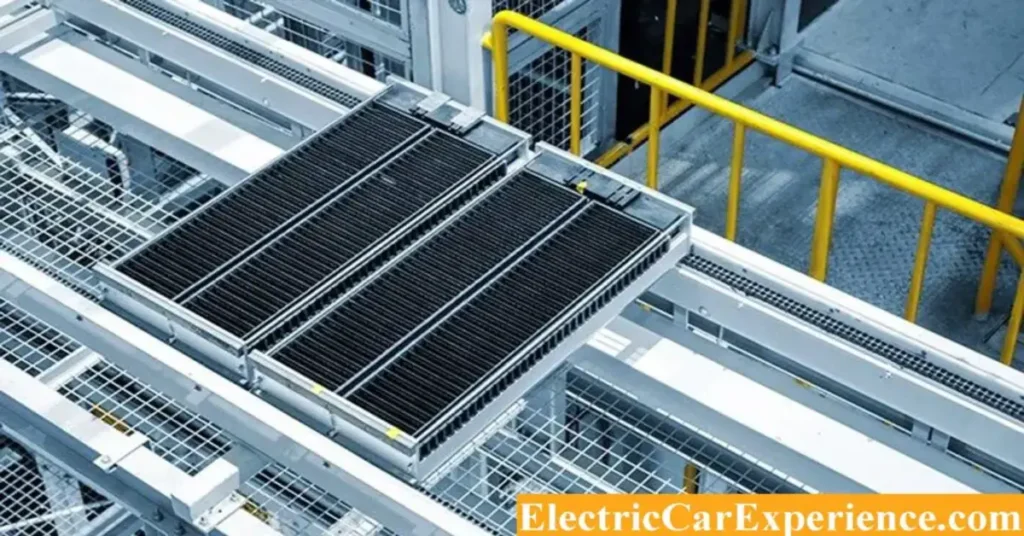
In the field of battery technology, this Tesla is one of the renowned automakers and Tesla is known for its longer range, faster acceleration, and dazzling speed, and the real credit goes to the actual power electronics & the batteries systems. But Which one is The Best BMS For Tesla Battery Modules?
The Tesla Battery Management System (BMS) is proprietary and integrated into the battery modules, designed specifically for Tesla vehicles. As such, there are no third-party BMS that can be considered the “best” for Tesla battery modules. Tesla’s BMS is optimized to ensure the efficient and safe operation of its battery systems. It is recommended to rely on Tesla’s original BMS for optimal performance and compatibility.
| Feature | Description |
|---|---|
| Integration | BMS is integrated into Tesla battery modules, providing monitoring and control capabilities. |
| Thermal Management | BMS regulates battery temperature to optimize performance. |
| Cell Balancing | BMS ensures balanced voltage and state of charge among battery cells. |
| Safety and Security | BMS incorporates safety measures to prevent overheating, overcharging, and other risks. |
So, in this blog, We will focus on the battery pack & briefly go through another topic like the mechanical or the thermal specifications. We also will be digging deeper into electrical, mechanical, or thermal specifications. We also will be digging deeper into electrical features & the characteristics, a cell module, efficiency, and exact protection features.
What Is The Battery System In An Electric Vehicle?
The primary energy storage system in an EV is a battery system, which is made up primarily of cells. In addition to material science and other fields, an EV battery system’s design necessitates electrical, mechanical, and thermal engineering expertise.
A battery electric vehicle (BEV) or the hybrid electric motors of electric vehicles are powered by a rechargeable battery known as the electric vehicle battery. They are prepared especially for the high electric charge (or energy) capacity lithium-ion batteries.
Power Source For The Tesla Model
A highly modular battery pack with excellent efficiency, dependability, and safety features is produced by Tesla. The battery pack comprises up to 16 modules linked together in a series, as previously mentioned. The battery pack in a Tesla weighs the most and has a voltage of about 400 volts. Since different versions of the same car may have different battery packs, this makes sense.
For instance, the battery pack of model S P85 has an actual capacity of 90 kWh & weighs over 530 kg. This also contains sixteen modules, which are 7104 and 18650 cells. This battery pack has the central bus bar, which connects every battery module with the contactor, which feeds both the front and rear electric motors. Since every module is 5.5 kWh, we have sixteen of those in the 90 kWh Tesla battery.
Tesla Model – Battery Specification
A battery pack comprises several cells organized in a specific pattern. Cells do have a variety of sizes, shapes, and interior chemistries. Read our previous posts on EV batteries’ comparison to learn more about Li-ion cells.

Types of cells utilized in various Tesla cars are provided in the table below:
| Car | Cell dimension |
| Tesla Model S | 18650 |
| Tesla Model 3 | 2170 |
| Tesla Model X | 18650 |
| Tesla Model Y | 2170 |
Each battery module in Tesla’s battery pack consists of a combination of Li-Ion cells coupled in a series and parallel Configuration to form the module. The division of the Battery Pack is depicted in the graphic below
The Tesla Model S 18650 Cell
18650 Li-ion cells made by Panasonic powers Tesla’s Model S and Model X models. A single 18650 cell used in the Model-S is depicted in the figure below.
The Tesla Model uses a 18650 cell as its power source. The cells are cylinder-shaped, measuring 18 mm in diameter and 65 mm in height. By dividing the integers into three pieces, it is simple to comprehend the cell’s nomenclature.
Technical Characteristics of the Tesla Models
This cell utilized in the Tesla Model S has also been developed by taking input from Tesla, specifically for Electric vehicle applications. These characteristics of the Tesla Model-S cells are also provided in the table below:
| Parameter | Specification |
| Capacity | 3.4 Ah |
| Cell Energy | 12.4Wh |
| Nominal Voltage | 3.66 V |
| Volumetric Energy Density | 755 Wh/L |
| Gravimetric Energy Density | 254Wh/Kg |
| Internal resistance | 30m Ohm |
| Cell mass | 49g |
| Cell volume | 0.0165L |
Battery Modules Of Tesla Model
Tesla Model S has multiple 18650 cells to make this battery pack. But rather than arranging all these cells and preparing a single large battery, Tesla utilizes multiple smaller batteries, known as the battery module, to make the final battery pack.
There are 16 modules totaling 7104 18650 cells in it. A contactor that supplies both the front and rear electric motors is connected to each battery module by the battery pack’s central bus bar. Since there are 16 of these 5.5 kWh modules in a 90KWh Tesla battery.
Every module has the 6S 74P Configuration; that is, six cells are connected in series, and every of these series has 74 cells also connected in parallel. Every module of Tesla is rated for 500A of the continuous current with 750Amps of the peak current. Liquid cooling is integrated to maintain the actual temperature of a battery pack.
The Tesla Model S battery module is depicted on the left, while its connections in a 6S 74P configuration are shown on the right. The pack’s cell configuration is 6S 74P, which results in a total of 444 cells.
The battery module has a total capacity of 232 Ah and 5.3 kWh. To learn how the series and parallel connections of the cells affect their voltage and capacity, read our article on constructing a 12V battery pack.
Each cell and the battery pack are joined together by Tesla using a wire bonding process. In the event of a cell failure, the wire also serves as a safety fuse, enhancing system safety.
In the table below, the battery module’s specifications are listed:
| Parameter | Specification |
| Nominal voltage (Battery module) | 22.8V/Module |
| Charge voltage cut-off(Battery module) | 25.2V/Module |
| Discharging cut-off(Battery module) | 19.8/Module |
| Maximum Discharging Current (10 sec.) | 750 Amps |
| Height | 3.1 inch |
| Width | 11.9 inch |
| Length | 26.2 inch |
| Weight | 55pounds |
Thermal Management Of The Module
Li-ion batteries can overheat when under load and could have a thermal runaway in extremely hot conditions. The Li-ion battery pack and the EV become unsafe to operate due to the thermal runaway, which can raise the danger of fire hazards in a cell and cause a cascade of events.
A thermal management module, when used to control engine cooling, is an electronically controlled thermostat with electromechanically driven rotary slide valves that govern coolant flow around an internal combustion engine.
By eliminating heat from inside the battery pack, the Thermal Management System, a very noticeable safety feature, ensures that the battery pack’s temperature stays below a predetermined threshold. The heat exchanger pipe that transports the cooling liquid inside the module is seen in the image below.
Thermally conductive and electrically insulative material is used to cover the cooling pipe, regulating the temperature inside the module while separating the cells from each other.
At the bends, the orange insulating tape is utilized; this particular material is known as the Kapton tape & is utilized to improve the existing insulation. A coolant utilized in the battery pack of Tesla is the real solution of water & glycol.
The bottom image, which AVL released, shows the temperature in various locations within a battery module after completing a high-intensity test. The coolant entrance is shown by the blue lines, while the red line shows the coolant output.

The chart below also displays the cell’s maximum and minimum temperatures. Using a 20°C starting temperature, a 250 Amp charge and discharge cycle was run as part of the test.
Conclusion
The battery pack in the Tesla Model is excellent, but it is only possible with the engineering and effort that went into its design and development. The design of the modules, battery pack, and cell selection all receive careful consideration. Although employing the battery pack as a structural component was a technical nightmare, the excellent mechanical design made it quite safe. It lowered the center of gravity of the entire vehicle close to the ground, boosting the vehicle’s stability and mobility.
FAQs
What BMS does Tesla employ?
Texas Instrument’s bq76PL536A-Q1 3-to-6 Series -Cell Lithium-Ion Battery Monitor and Secondary Protection is the foundation for Tesla’s BMS in the Model-S. Every module has a built-in BMS that keeps tabs on cell temperature, battery life, and charge-discharge cycles.
Are there BMSs in Tesla batteries?
The battery is taken care of by the Tesla Battery Management System (BMS). In addition to controlling charging, it calculates the amount of energy drawn from the battery, determining how far the car can be driven with that energy.
Can this BMS be utilized for charging?
The battery management system is the electric regulator which monitors & controls the charging & discharging of rechargeable batteries. Battery management systems of multiple kinds utilize tools that utilize rechargeable batteries.
Why is BMS needed for battery?
A BMS keeps track of the temperatures throughout the pack and controls several valves to keep the overall battery temperature within a specific range for optimum battery performance.
Posts Related to Electric Cars and Batteries
- Why does Tesla Car have a 12-volt Starter Battery?
- Does Tesla Replace Batteries For Free?
- Is Buying A Tesla With The Current State Of Battery Tech Worth It?
- How Much Energy Needs to Make A Tesla Battery?
- Tesla Battery Life Per Charge – Complete Guide 2024
- How To Calculate Mileage Of Electric Car?
- Tesla Batteries Are Dead, How To Open The Doors?
- Are electric cars worthless once the main battery dies?
- Tesla Model S Depreciation in The Uk
- Model Y Charging Speed Chart

